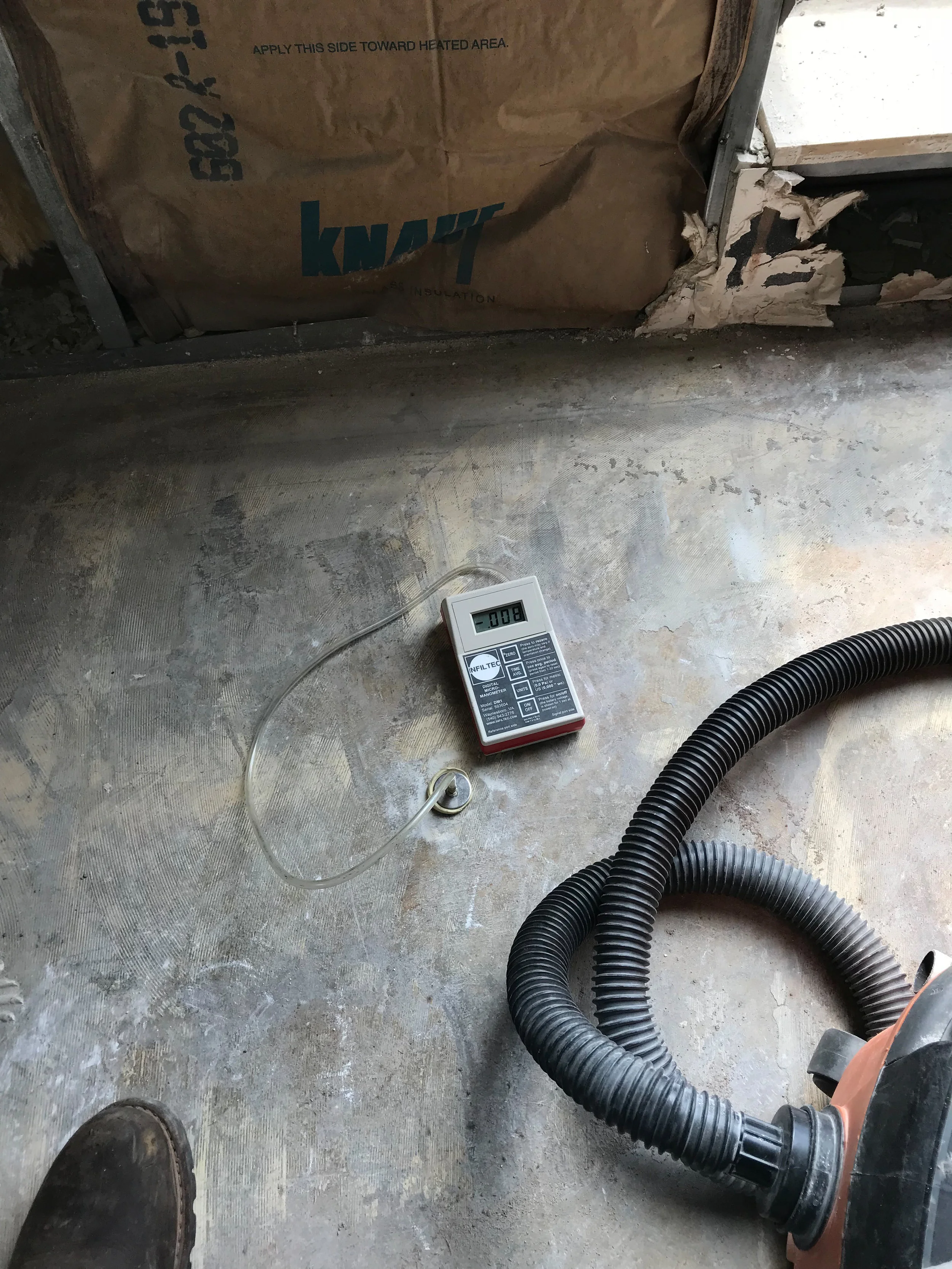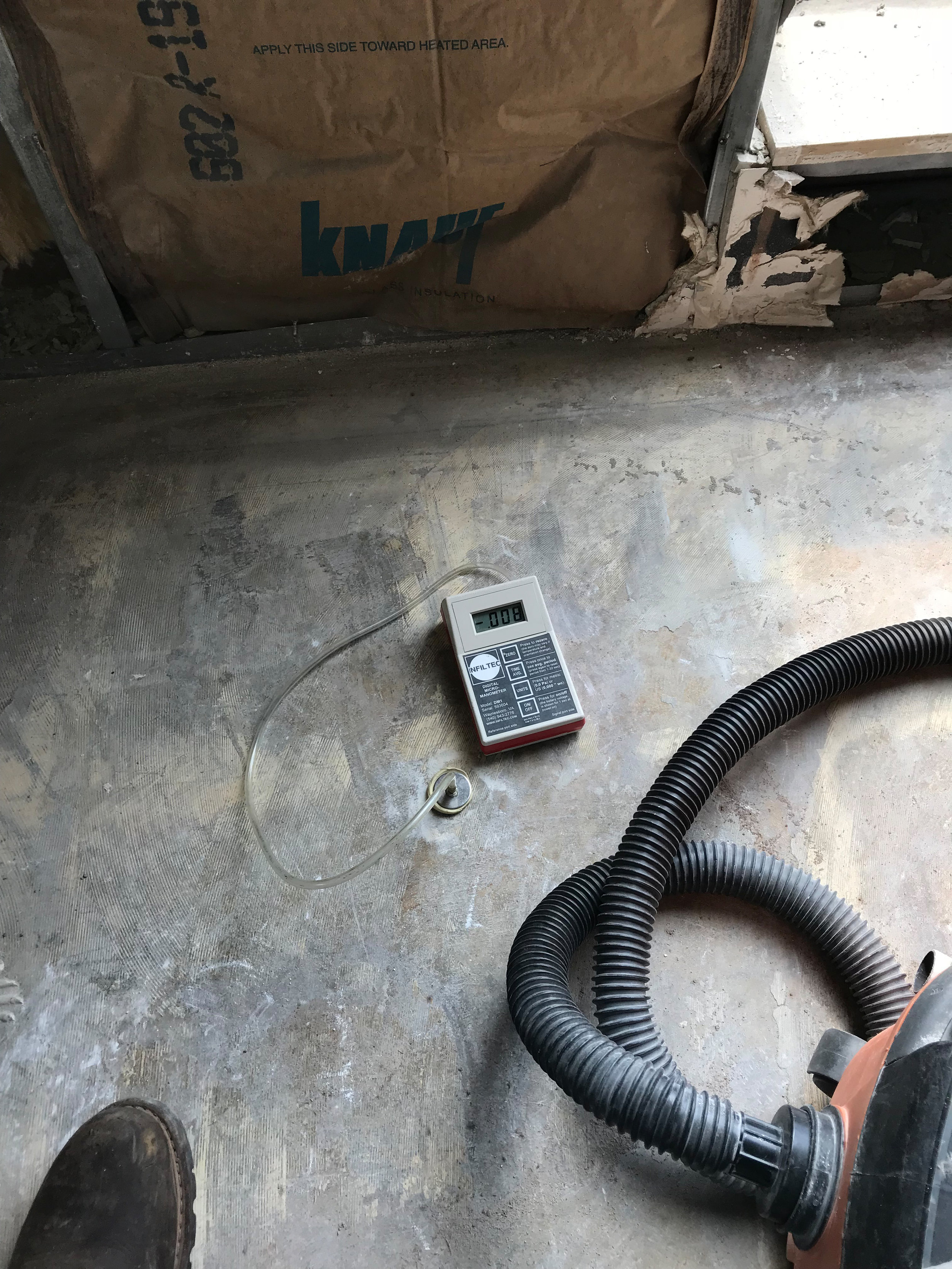KERAMIDA offers comprehensive vapor intrusion services from testing through mitigation design and installation.
What is Vapor Intrusion?
The US EPA defines vapor intrusion as “migration of vapor-forming chemicals from any subsurface source into an overlying building.” These vapor-forming chemicals may include volatile organic compounds (VOCs), select semi-volatile organic compounds and inorganic chemicals, such as elemental mercury, naturally occurring radon, and hydrogen sulfide.
The vapors may accumulate in dwellings or occupied buildings to levels that may pose an unacceptable risk of health effects due to long-term (i.e., chronic) exposure. The assessment of the risk of health effects is complicated by the potential presence of some of the same chemicals from emission sources within the building including household solvents, cleaners and gasoline.
This figure depicts the migration of vapors in soil gas from contaminated soil and groundwater into buildings. Vapors in soil gas are shown to enter buildings through cracks in the foundation and openings for utility lines. Atmospheric conditions and building ventilation are shown to influence soil gas intrusion (figure & caption source: US EPA)
KERAMIDA's Vapor Intrusion professionals are highly experienced in successfully assessing and providing vapor intrusion remediation solutions in the most challenging situations.
Project work has included the assessment of all types of buildings and foundation types (e.g., slab on grade, crawl space, basements, commercial, residential, etc.).
Mitigation systems (i.e., active and passive) have been designed and installed on both commercial and residential buildings and structures.
Multiple projects regularly include paired vapor intrusion sampling with indoor air, sub-slab and ambient (upwind or background) air samples collected for VOCs in accordance with US EPA Method TO-15.
Vapor Intrusion Assessment & Sampling:
Clients in need of a vapor intrusion assessment company, choose KERAMIDA because of our extensive experience, full scope of VI services, and meticulous attention to detail during assessment.
Prior to each vapor intrusion sampling event, KERAMIDA personnel conduct a thorough inspection of the building or structure interior (building survey) including:
looking for utility penetrations
inventory of vapor emitting products (e.g., paints, cleaning products, etc.)
interview of occupant and owner
communication of occupant instructions prior-to and during sample collection
As necessary, building penetrations are sealed and potential interior vapor sources are removed prior to sample deployment. Results of sampling are evaluated by a KERAMIDA professional and compared to applicable regulatory criteria.
Vapor Intrusion pre-sampling inspection of building interior and retail products using part per billion (PPB) photo-ionization detector (PID)
Collection of Vapor Intrusion sub-slab 1-liter air sample using EPA Method TO-15 for chlorinated VOCs
Collection of Vapor Intrusion 6-liter indoor air sample using EPA Method TO-15 for chlorinated VOCs
Vapor Mitigation System Design & Installation:
Following the vapor intrusion assessment, KERAMIDA can conduct mitigation system design and installation specific to the building and current or future usage.
System design can be completed on existing buildings or structures, new construction, or remodeled buildings. The mitigation design typically includes testing of sub-slab pressures and flows through performance of a pilot test, and owner and/or tenant communication on equipment installation specifics and locations and long-term monitoring and operation requirements. Mitigation system installation is managed by KERAMIDA through our network of contractors or in coordination with client preferred trade professionals performing other services in the building or the project site.
Vapor mitigation pilot test to evaluate sub-slab conditions to assess vapor mobility and develop a vapor mitigation design
Vapor mitigation assessment of sub-slab resistance, environmental influence and pressure field extension (PFE) testing using a digital-manometer
Vapor mitigation system installed ceiling piping (during installation) and extraction point control valves in a remodeled commercial space
Dual-fan sub-slab vapor mitigation system installed on building roof at a commercial use building
Related Projects:
Related Services:
KERAMIDA offers innovative, comprehensive, and cost-effective solutions for the cleanup and redevelopment of EPA Brownfield sites. Our team of environmental experts have extensive due diligence and remediation experience working with large manufacturing facilities, Superfund sites, gas stations, dry cleaners, and more.
KERAMIDA is full-service environmental consulting firm with decades of Due Diligence experience performing Phase I & Phase II environmental site assessments and remediation services. Minimize risk and protect yourself from liability in any commercial real estate transaction where potential environmental risks are a concern.
KERAMIDA's environmental engineering and remediation services are led by an experienced team of professionals with a wide range of expertise from Superfund Site cleanup to ERD remediation for TCE & PCE impacted sites. Our groundwater and soil remediation solutions for contaminated sites are creative and cost-effective.





















